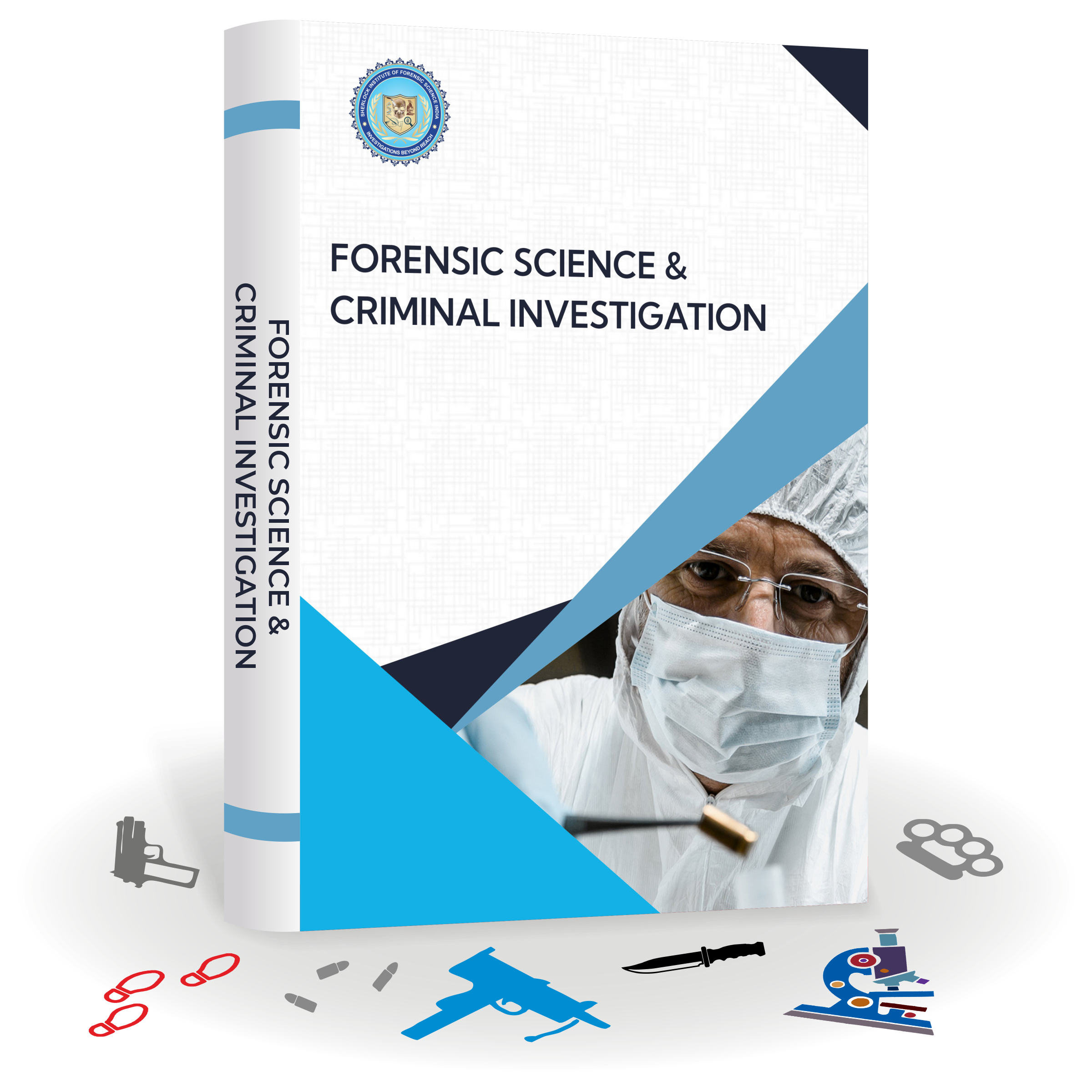MODULE 1 – INTRODUCTION TO FORENSIC SCIENCE AND CRIMINAL INVESTIGATION
This module covers an overview of forensic science, including its principles, historical development, role in criminal investigations, and different disciplines of forensic science and how each contributes to crime-solving. You will also learn about the organizational structure of forensic labs and the legal framework that guides forensic experts during criminal investigations.
MODULE 2 – CRIME SCENE INVESTIGATION AND MANAGEMENT
In this module, you will learn about crime scene investigation and its purpose, the roles of first responders and forensic scientists, types of crime scenes, the seven steps of crime scene investigation, different types of evidence and the techniques to properly collect and preserve them, and chain of custody maintenance. The module also covers ways to reconstruct crime scenes and present your findings in court for legal proceedings.
MODULE 3 – PHYSICAL EVIDENCE COLLECTION AND PRESERVATION
This module focuses on an overview of evidence collection and preservation, types of evidence encountered in criminal cases (physical, biological, and trace), and the process to collect, preserve, package, and forward different types of evidence while maintaining its reliability to be admissible in court. This knowledge will equip you with the skills to safeguard crucial evidence throughout the investigative process.
MODULE 4 – FINGERPRINT IDENTIFICATION
This module covers an overview of fingerprint identification, its fundamental principles, pattern classifications, the study of ridge characteristics that make each print distinctive, techniques to record fingerprints, Henry's System of Classification, types of fingerprints that may be found at the crime scene, and methods to develop, lift, preserve, and identify them. You will also gain insights about methods to identify and examine other impression evidence beyond fingerprints.
MODULE 5 – QUESTIONED DOCUMENT EXAMINATION
In this module, you will learn about the need to carefully handle questioned documents, principles and techniques to examine different types of documents (handwritten including handwriting and signature, typewritten, printed, photocopied, etc.), paper and ink examination, counterfeit currency detection, and digital signature fraud detection. The module will help you gain knowledge to examine document authenticity and identify potential forgeries.
MODULE 6 – COMPUTER AND CYBER CRIME
This module focuses on an overview of computer and cybercrime, types of cyber crimes (hacking, identity theft, and online fraud), the importance of proper collection and handling of digital evidence, and the legalities and challenges involved in searching for and seizing electronic evidence. You will also learn about tools and techniques used in digital forensic analysis and presenting digital evidence in court within legal boundaries.
MODULE 7 – FORENSIC BIOLOGY
This module focuses on a forensic biology overview, atomical structure and the stages of hair growth, and the identification of botanical evidence (pollen grains, wood, diatoms, and leaves). The primary focus of this module is on DNA profiling, sources of DNA, extraction techniques, evaluation methods, and its role in forensic investigations, thereby highlighting the significance biological evidence holds in solving crimes.
MODULE 8 – CRIMINAL INVESTIGATION TECHNIQUES
In this module, you will learn various investigative methods, including Modus Operandi (understanding the patterns and techniques used by criminals), criminal profiling (creating offender profiles as per behavioral analysis), and portrait Parley (creating suspects’ composite sketches). The module also covers the study of advanced tools like polygraphs, narco analysis, brain fingerprinting, voice stress analysis, and speaker profiling to gather valuable information as evidence.
MODULE 9 – FORENSIC TOXICOLOGY
This module focuses on general toxicology principles, poison classification along with their action mechanisms, and the need for proper collection and preservation of toxicological exhibits. You will also learn about medico-legal aspects and the role of toxicology in post-mortem examinations, poisoning case treatments, and the impact of toxicological findings in legal proceedings.
MODULE 10 – FORENSIC PHYSICS
This module covers forensic physics overview, glass evidence analysis (types, composition, fracture, forensic examination), examination of soil and its types, types of paint and its forensic analysis and examination, fiber classification and examination, obliterated marks (types, restoration principles, and techniques), tire marks (casting and lifting tire impressions, examination of skid marks and tire impressions), and tool mark types and their forensic examination.
MODULE 11 – FORENSIC BALLISTICS
In this module, you will learn about firearms examination, types of ballistics, firearms classification, components of ammunition (projectiles, primers, propellants, cartridges, wads, and percussion caps), bullet source and casing tracing of specific firearms, and wound ballistics (effects of firearms on the human body). The module also highlights firearms examination using microscopic, chemical, and instrumental methods crucial to analyzing firearms and related evidence while investigating firearms-related incidents.
MODULE 12 – ARSON & EXPLOSIVES
This module covers incidents related to arson and explosives. It covers the chemistry of fire, and methods to locate the point of origin, searching for accelerants used to start fires. It covers the chemistry of fire, methods for determining the point of origin in arson cases, the search for accelerants used to start fires, ways to collect, preserve, and examine arson evidence, and explosives types and devices. You will also learn about bombing scene investigation techniques (pre- and post-bombing), improvised explosive devices, and explosive analysis.





